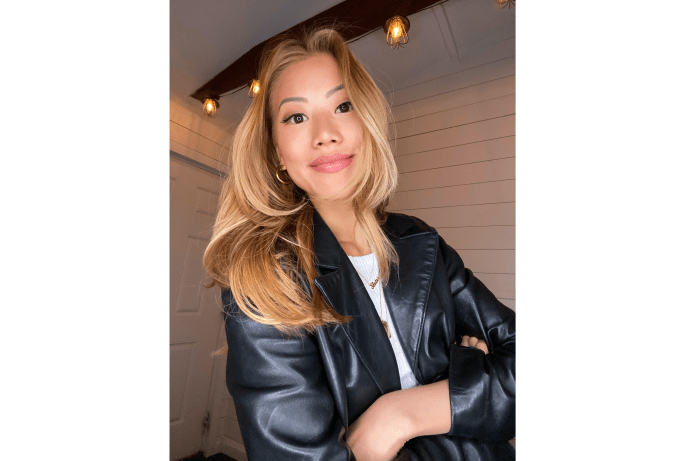Mai Mia Swimwear Designer is Changing the Game
Mai Mia founder and lead creative Soozie Heo designs swimwear with more than just sunbathing in mind. We chatted with Heo about her latest collection, her strides in sustainability and her advocacy for women of color through her business practices.

Soozie Heo
SI: You are a first generation Korean-American designer. You are an advocate for women like yourself who face racism in the fashion industry. What are some ways you stand up to this?
SH: Since my parents were immigrants from South Korea, I didn’t come from a fashion background or have a lot of the same resources or connections in the industry. Growing up a minority in a predominantly white neighborhood, there weren’t many people like me in high places to look up to. Every successful milestone I’ve had was earned by putting in the work and creating my own spaces.
Standing up to racism means being unapologetically yourself, being proud of your unique upbringing and heritage. It means creating a platform to speak up and being vocal about what you believe in. As a WOC-owned brand, diversity and inclusivity have always been the standard for the models we cast and our company values. Mai Mia donates 10% of every sale to organizations that help fight for racial equality, and we share resources and information on how to further educate yourself on the history of and the fight against racism through our socials.
SI: What type of woman do you design for?
SH: All the women we’ve worked with in our past campaigns have powerful through lines of being multi-hyphenate women. For example there is Elizabeth de la Piedra, who is a photographer, model, DJ and a mother of two, They embody the modern woman who is confident, honest and consciously cares about the world she lives in and the people in it -- and isn’t afraid to show some skin.
SI: You studied at Parsons School of Design, worked under Helmut Lang and Prabal Gurung, and helped launch many successful swimlines including Inamorata. At what point did you realize you could do it on your own?
SH: I left Parsons at the end of my junior year and started freelancing in New York City shortly after. Not going back to school was probably one of the hardest, but in hindsight, the most rewarding decision I ever made. It propelled my desire to succeed and to push past my insecurities of feeling underqualified and just go for things. I moved to Los Angeles in 2011 and designed for BCBG Max Azria, Nasty Gal and Revolve, and helped develop a handful of swimwear lines alongside the designers like Inamorata, Wildfox, Baja East, and Dipped in Blue. I started my swimwear line, Mai Mia, after leaving Revolve, and also led the design teams for a number of influencer apparel collections including Jenn Im, Amanda Steele, Jordyn Woods, Amanda Stanton and a handful of others.
When I was brought on to Revolve, I launched a brand called NBD and within a year it became the best selling brand on the site out of the more than 500 retailers they carried. When I saw my designs were the top-selling styles month over month, I started to believe in myself and my talent. As I developed and gave design direction for more and more brands, it reassured me even more that I was capable of doing it on my own.
SI: You consider your pieces wearable from beaches to the boardroom because they can be used as layering pieces. That’s something we can definitely get behind, particularly because swimwear is so seasonal. Do you see something like this as a way to promote sustainability?
SH: I design with the intention of asking myself: Could I wear this as a top with my other clothes? Does this feel special and a little different from what already exists? The colors and prints I choose naturally include a lot of neutrals -- yes, leopard is a neutral -- that work seamlessly into anyone’s wardrobe. I always style a few looks with my first prototypes to make sure that the colors can pair back with lots of different styling options. By maximizing your outfit options with our pieces, you’re contributing to the reduction of waste that this industry produces. Repurposing our swimwear in different looks breathes new life into them and expands the lifeline of your wardrobe.
SI: Your line is direct-to-consumer which allows you to cut out a middle man. How does your consumer benefit from this and why is this important to you?
SH: Coronavirus exposed the realities of capitalism and we're committed to being a part of the solution, not the problem. We decided to change to a direct-to-consumer pricing model, so we can make our prices as fair as possible without sacrificing quality and sustainability. Each piece is made in Los Angeles and by producing locally, we’re able to help support commerce in our community, ensure fair business practices and wages, and reduce the C02 output from garment transport. Since we’re always working on ways to reduce our carbon footprint, we order small quantities and don’t mass produce anything. It’s important for us to be DTC so we can maintain a direct connection with our customers. We want them to feel involved and part of the process.
SI: You involved your Instagram followers in your latest collection by asking them to vote on colors. Is this something you’ll continue doing?
SH: Definitely. We love making what people want and, as a DTC business, our customer’s wants and needs are our top priorities.
SI: What was the inspiration behind your latest collection?
SH: I was inspired by the colors that our customers chose from our IG polls, as having an open dialogue with them is important to us. They chose Red and Marigold, and I chose a Zebra Print that complimented those colors. When I glanced at the color palette of red, yellow, and black and white -- the words Love, Unity and Hope resonated. I shot the new collection on my good friend, Jaclyn, who has been someone with whom I’ve been having open and honest conversations about race and current news events. She was reading this book called So You Want To Talk About Race, which we ended up shooting with the collection to encourage people to keep learning and continuing the conversation for change. Let’s move forward with more Love, Unity and Hope.
